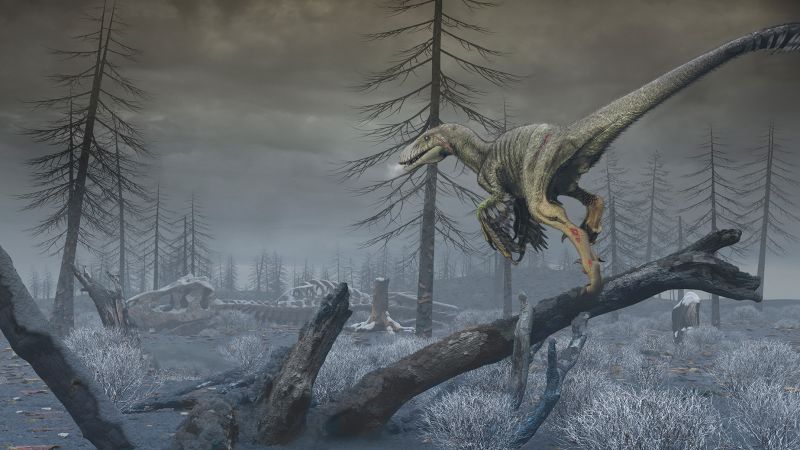Mark A. Garlick
An artist’s impression of the aftermath of the asteroid that created the Chicxulub crater off the coast of what is now Mexico. Within weeks or months after the strike, dust would have blocked off the sun, shutting down photosynthesis.
Sign up for CNN’s Wonder Theory science newsletter.
Explore the universe with news on fascinating discoveries, scientific advancements and more
.
CNN
—
The age of the dinosaurs ended 66 million years ago when a city-size asteroid struck a shallow sea off the coast of what is now Mexico.
But exactly how the mass extinction of 75% of the species on Earth unfolded in the years that followed the cataclysmic impact has remained unclear.
Previous research suggested that sulfur released during the impact, which left the 112-mile-wide (180-kilometer-wide) Chicxulub crater, and soot from wildfires triggered a global winter, and temperatures plunged.
However, a new study published Monday in the journal Nature Geoscience suggests that fine dust made from pulverized rock thrown up into Earth’s atmosphere in the wake of the impact likely played a greater role. This dust blocked the sun to an extent that plants were unable to photosynthesize, a biological process critical for life, for almost two years afterward.
“Photosynthesis shutting down for almost two years after impact caused severe challenges (for life),” said lead study author and planetary scientist Cem Berk Senel, a postdoctoral researcher at the Royal Observatory of Belgium. “It collapsed the food web, creating a chain reaction of extinctions.”
Pim Kaskes
The pink-brown layer in the sediment from a site in North Dakota contained material ejected from the Chicxulub crater that was used as part of the climate modeling study.
To reach their findings, scientists developed a new computer model to simulate the global climate after the asteroid strike. The model was based on published information on Earth’s climate at that point in time, as well as new data from sediment samples taken from the Tanis fossil site in North Dakota that captured a 20-year period during the aftermath of the strike.
The Tanis fossil site provides a unique record of what was perhaps the most significant event in the history of life on our planet. Fossilized fish found at the site have revealed that the asteroid struck off Mexico’s Yucatán Peninsula in springtime. Other fossils found there show how the disastrous day unfolded in unprecedented detail.
The sample from the site analyzed for the new study contained silicate dust particles that were thrust into the atmosphere in a plume of ejecta before returning to Earth.
The team determined that this fine dust could have remained in the atmosphere for up to 15 years after the asteroid strike.


